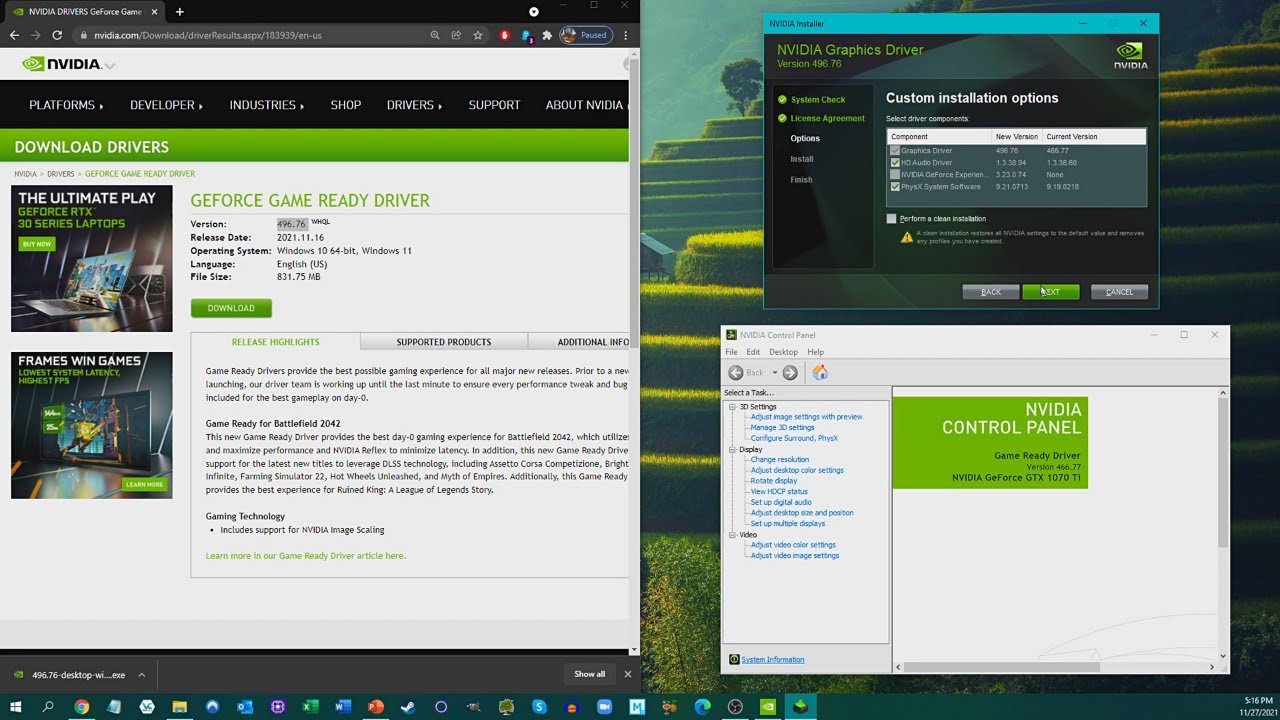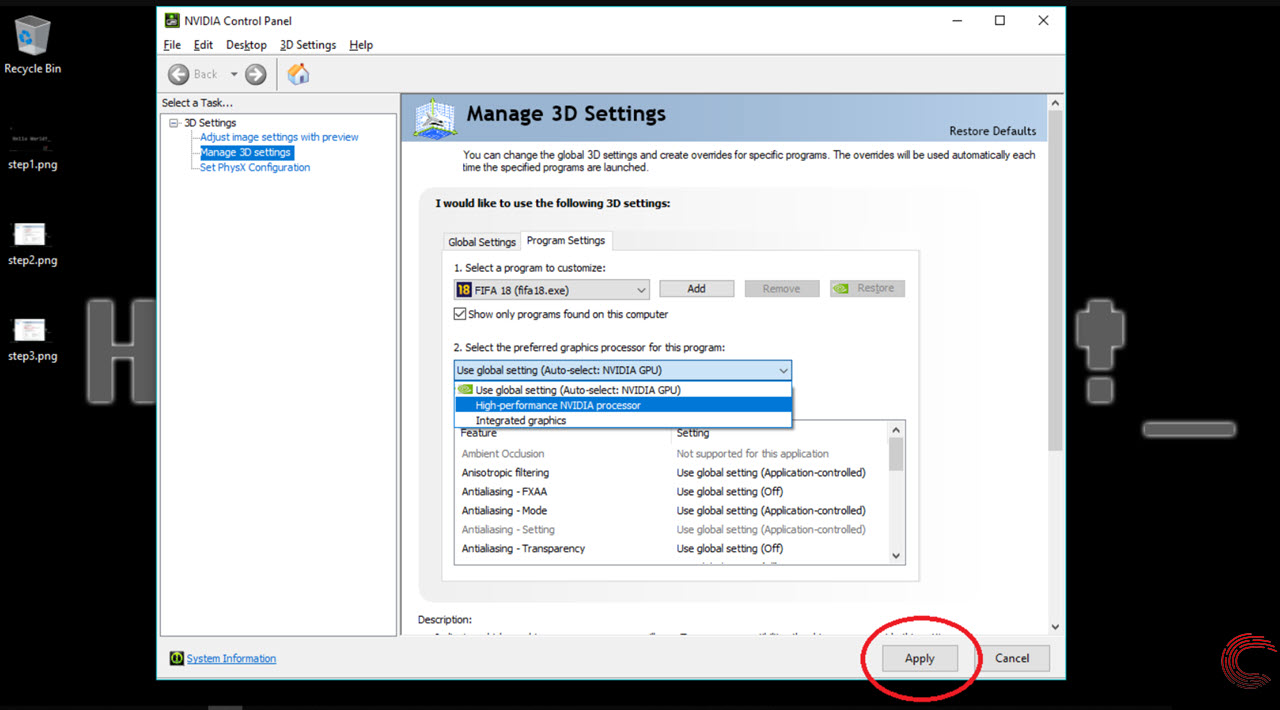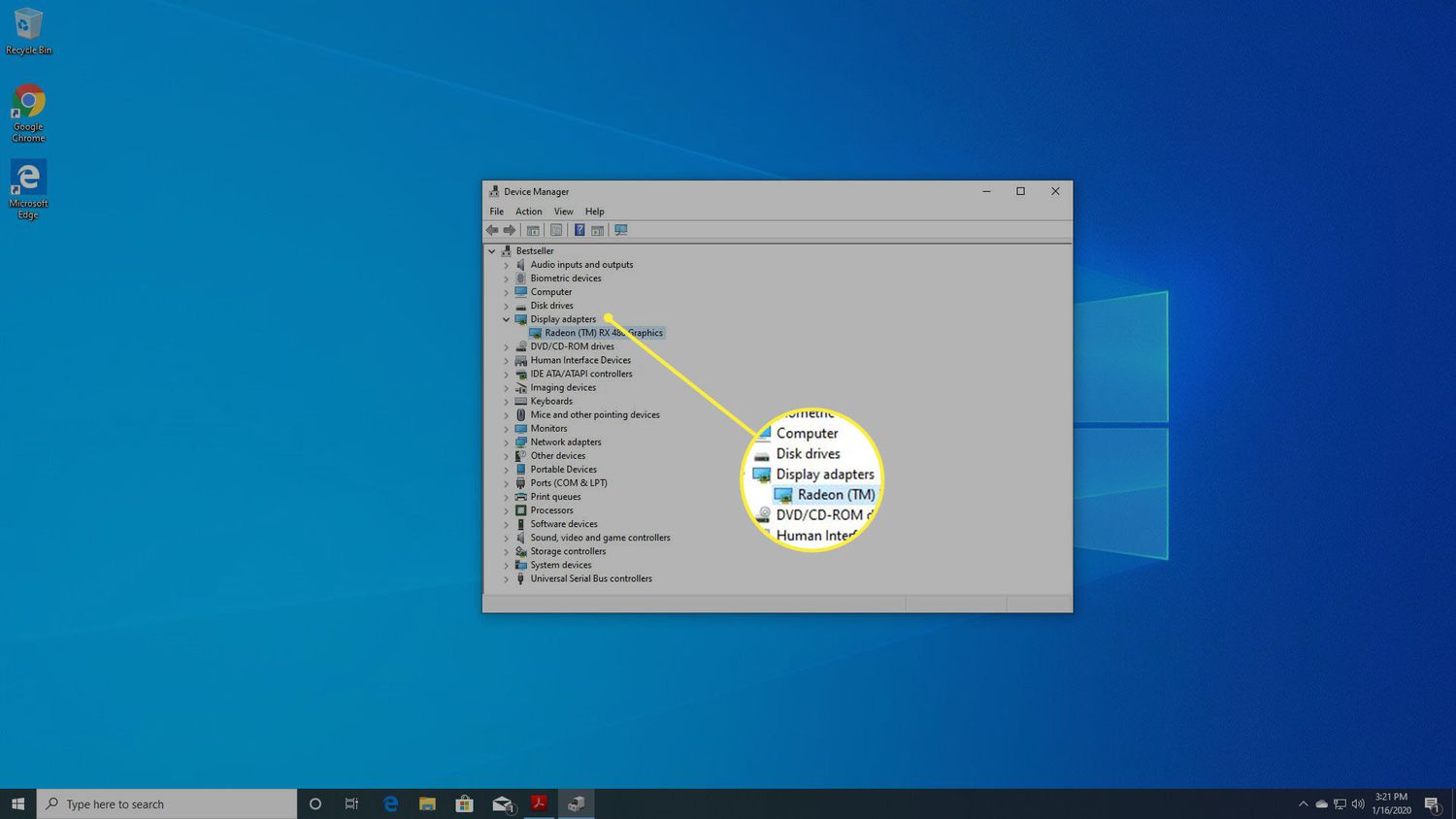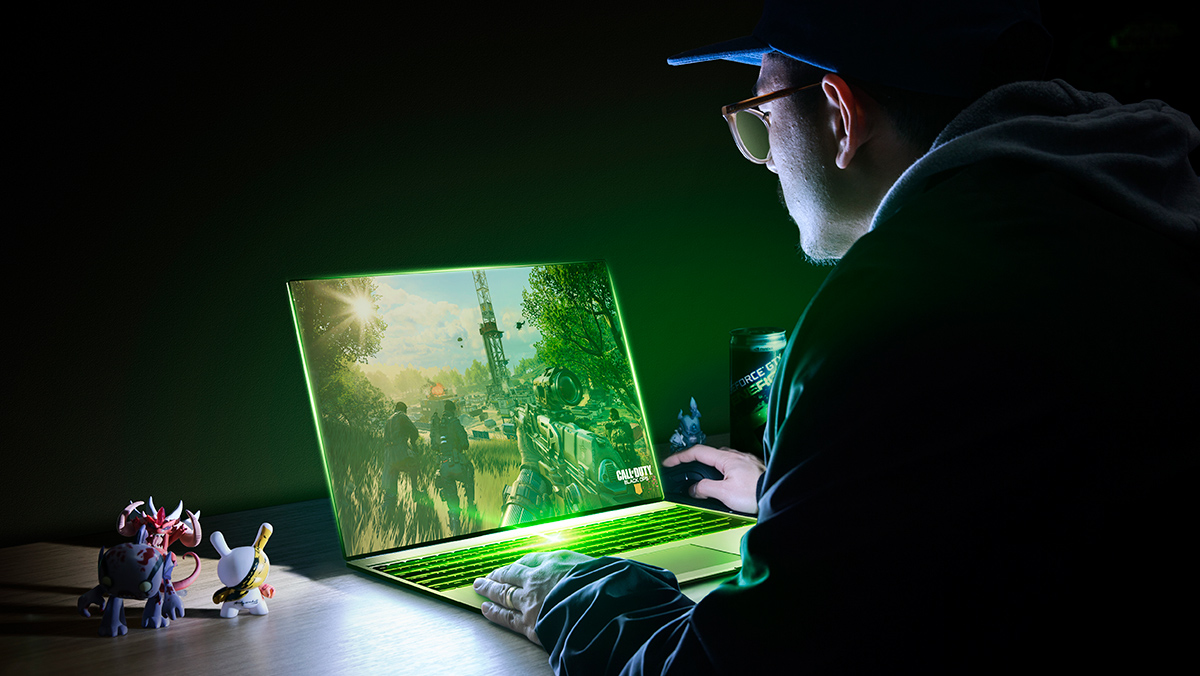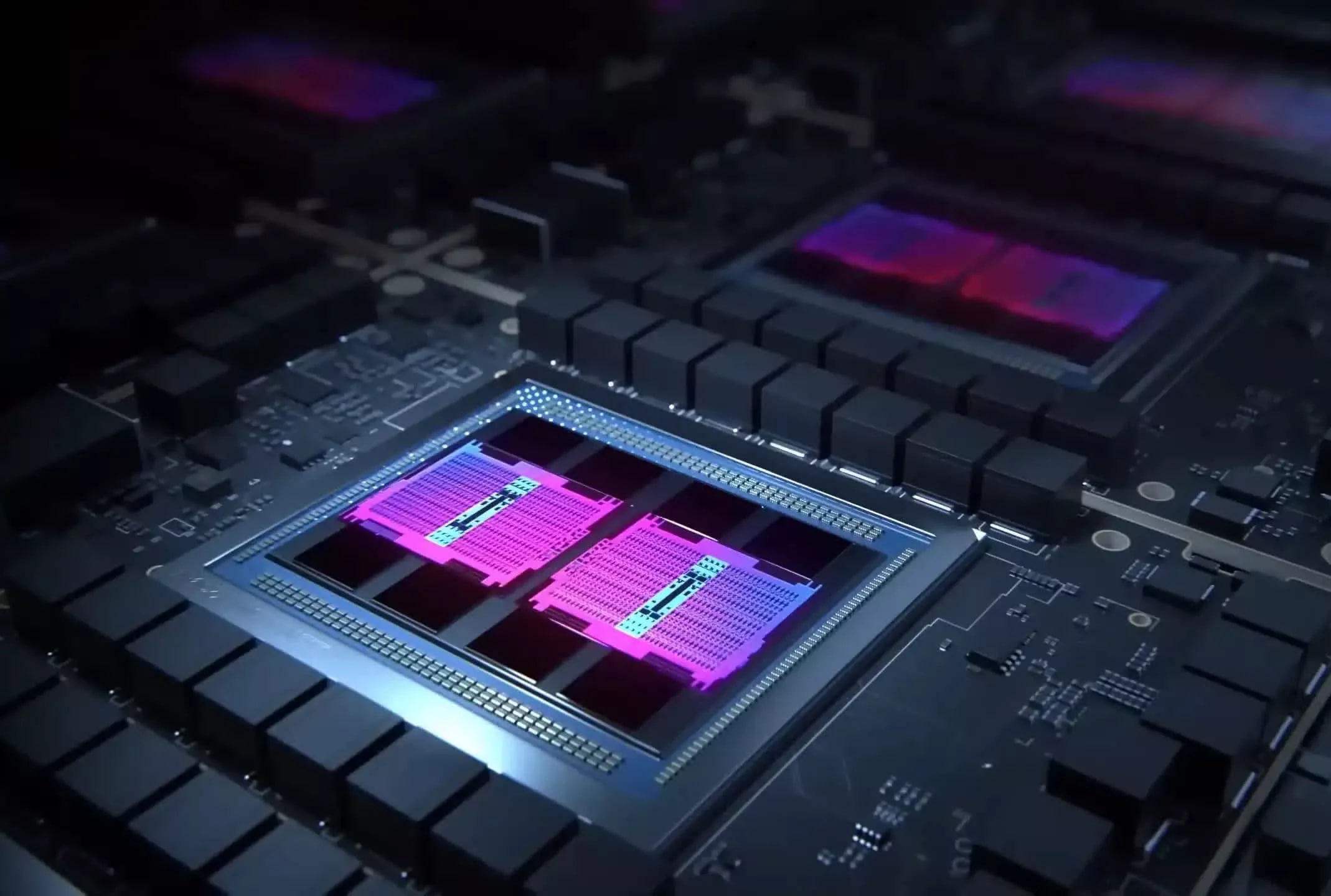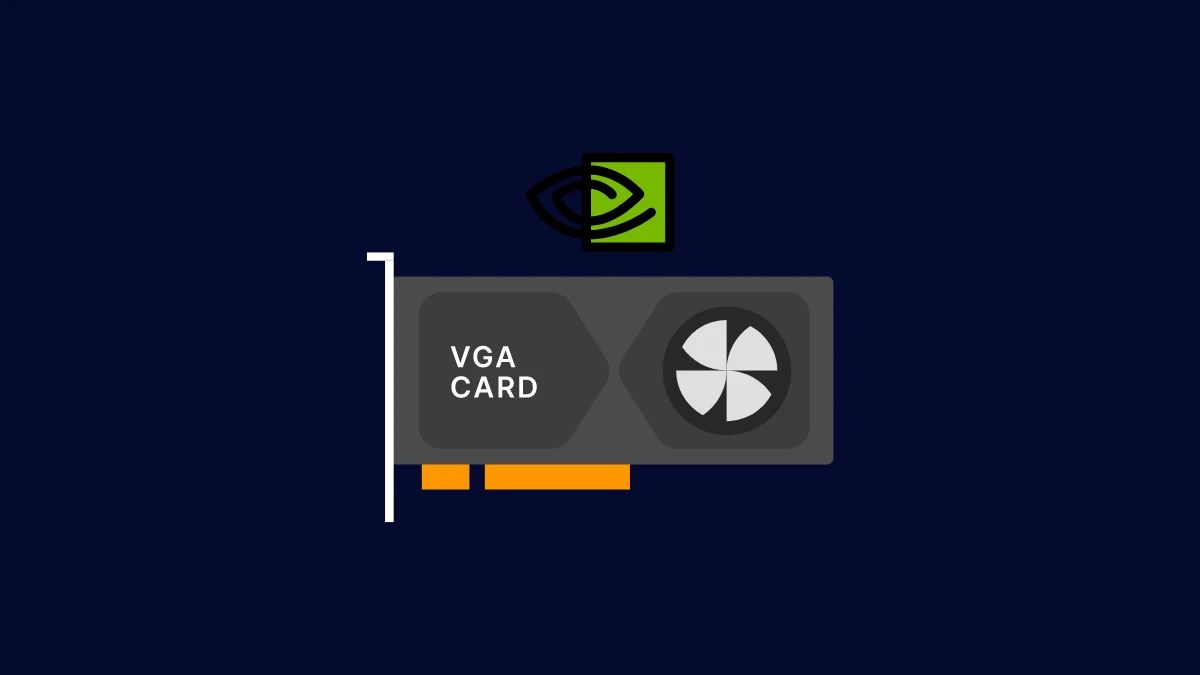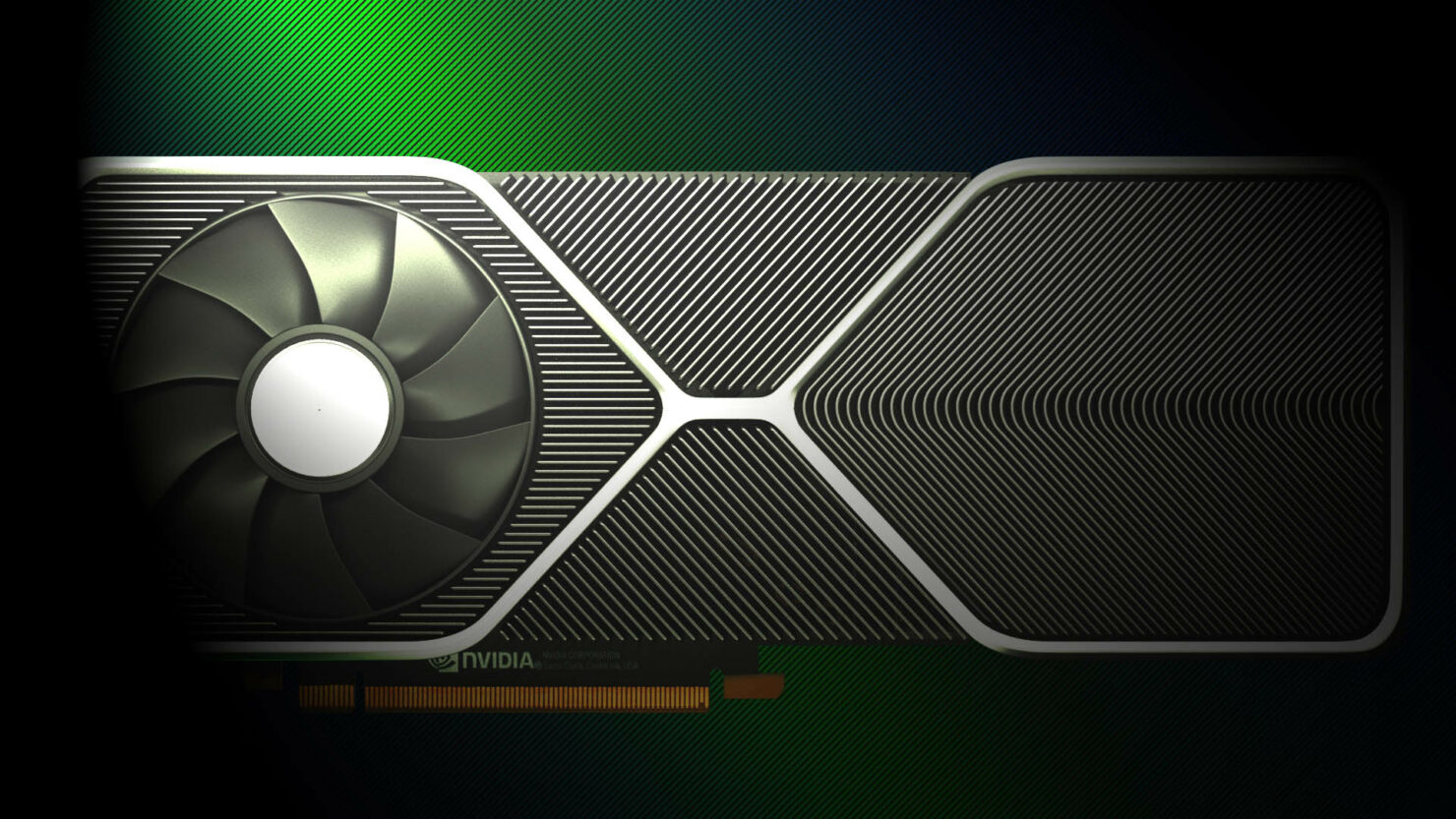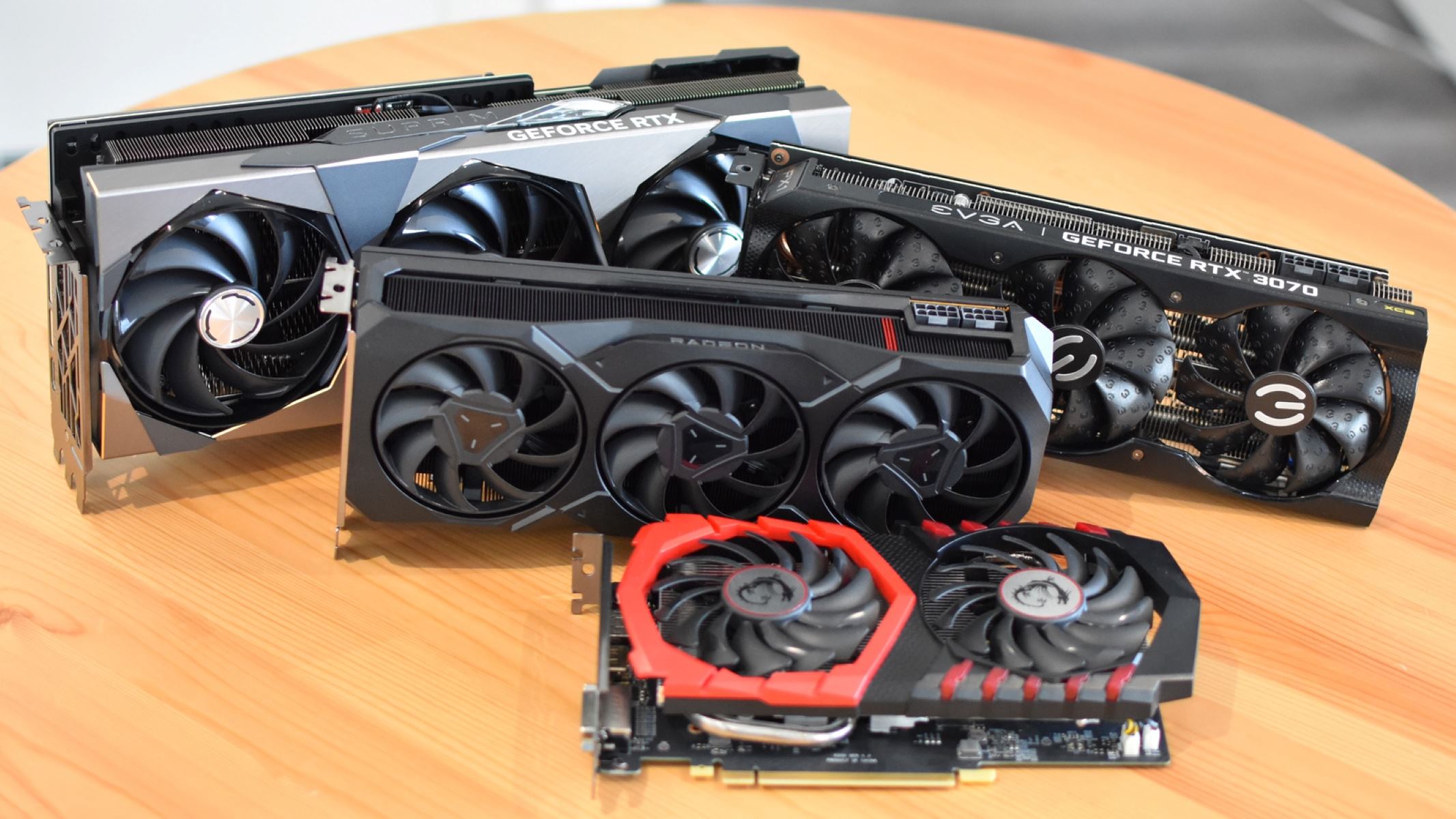Introduction
Welcome to this step-by-step guide on how to update an Nvidia graphics card. Keeping your graphics card driver up to date is crucial for optimal performance and compatibility with the latest games and applications. Nvidia regularly releases driver updates to address bugs, improve stability, and introduce new features. By following these instructions, you can ensure that your Nvidia graphics card is running on the latest driver version.
Updating your Nvidia graphics card driver is a relatively straightforward process that involves checking the current driver version, downloading the latest driver, uninstalling the old driver, installing the new driver, and verifying the update. By following these steps, you can ensure a smooth and successful driver update process.
Before we dive into the steps, it’s essential to note that this guide is specifically for Nvidia graphics cards. If you have an AMD or Intel graphics card, the process for updating the drivers may differ. Additionally, it’s recommended to only update your graphics card driver if you are experiencing issues or if there is a significant performance improvement offered in the new driver version. If everything is running smoothly, there may not be a need to immediately update the driver.
To proceed with updating your Nvidia graphics card driver, let’s begin by checking the current driver version on your system. This will help us determine whether an update is necessary and provide us with a baseline for comparison after the update is complete.
Step 1: Checking the Current Driver Version
Before you update your Nvidia graphics card driver, it’s essential to identify the current driver version installed on your system. This information will help you determine if an update is necessary and provide a baseline for comparison after the update. To check the current driver version, follow the steps below:
- Open the Nvidia Control Panel by right-clicking on your desktop and selecting “Nvidia Control Panel” from the contextual menu. Alternatively, you can search for “Nvidia Control Panel” in the Windows Start menu.
- In the Nvidia Control Panel, click on the “System Information” tab located on the left-hand side.
- Under the “Driver Version” section, you will find the current driver version installed on your system. Take note of this version number as it will be helpful later on.
It’s important to remember that Nvidia releases driver updates regularly. Therefore, it’s possible that a newer driver version is available even if you recently installed or updated your drivers. Keeping your drivers up to date ensures compatibility with the latest games and applications, provides bug fixes and performance improvements, and resolves known issues.
Now that you have determined the current driver version installed on your system, you can proceed to the next step, which is downloading the latest Nvidia driver.
Step 2: Downloading the Latest Nvidia Driver
Once you have checked the current driver version on your system, it’s time to download the latest Nvidia driver. Follow these steps to ensure you have the most up-to-date driver for your graphics card:
- Visit the official Nvidia website at www.nvidia.com using your preferred web browser.
- Hover your mouse over the “Drivers” tab from the main menu and select “GeForce Drivers” from the drop-down menu.
- On the “GeForce Drivers” page, you can choose to manually search for the driver or use the Nvidia automatic driver detection feature. If you prefer manual searching, select your graphics card series, product line, and operating system from the available options. Then click on the “Search” button to proceed.
- If you opt for the automatic driver detection, click on the “Automatic Driver Updates” button, and Nvidia will scan your system to determine the appropriate driver for your graphics card.
- Once the driver search is complete, you will be presented with the latest driver version available for your system. Take note of the driver version number to ensure you are downloading the correct one.
- Click on the “Download” button to begin the driver download. Depending on your internet speed, this process may take a few minutes.
It’s worth mentioning that Nvidia’s website provides additional information about the driver, including release notes, system requirements, and any known issues. You can review these details before proceeding with the download to ensure compatibility with your system and specific needs.
After downloading the latest Nvidia driver, you are now ready to uninstall the old driver, which we will cover in the next step.
Step 3: Uninstalling the Current Driver
Before installing the new Nvidia driver, it’s important to properly uninstall the current driver to avoid any conflicts or issues. Follow these steps to uninstall the current Nvidia driver from your system:
- Press the Windows key + X on your keyboard to open the Power User Menu. From the menu, select “Device Manager”.
- In the Device Manager, expand the “Display adapters” category to reveal your installed graphics card(s).
- Right-click on your Nvidia graphics card and select “Uninstall device” from the contextual menu. Note: If you have multiple Nvidia graphics cards installed, repeat this step for each one.
- A confirmation dialog box will appear. Check the box that says “Delete the driver software for this device” to completely remove the driver from your system.
- Click on the “Uninstall” button to initiate the driver uninstallation process.
- Wait for the uninstallation process to complete. It may take a few moments depending on your system.
- Once the driver has been uninstalled, you may be prompted to restart your computer. If so, go ahead and restart your system.
It’s important to note that uninstalling the Nvidia driver will temporarily disable your graphics card. During this time, your display may appear distorted or use a lower resolution. Don’t worry, as this is normal and will be resolved once you install the new driver in the next step.
Now that you have successfully uninstalled the old Nvidia driver, you are ready to proceed with the installation of the new driver.
Step 4: Installing the New Nvidia Driver
With the old Nvidia driver uninstalled, you can now proceed with installing the new driver. Follow these steps to install the latest Nvidia driver on your system:
- Locate the downloaded Nvidia driver file on your computer. By default, it is usually saved in the Downloads folder unless you specified a different location.
- Double-click on the driver file to initiate the installation process.
- A security prompt may appear asking for permission to run the file. Click “Yes” or “Run” to proceed.
- The Nvidia driver installation wizard will launch. Follow the on-screen instructions to progress through the installation process.
- During the installation, you may be presented with customization options. You can choose to perform a fresh installation with default settings or customize the installation to suit your requirements.
- Review the license agreement and click on the checkbox to accept the terms and conditions. Then click “Next” to continue.
- The installation process will begin. It may take a few minutes to complete, so be patient and avoid interrupting the installation.
- Once the installation is finished, you may be prompted to restart your computer. If so, go ahead and restart to finalize the driver installation.
After restarting your system, the new Nvidia driver will be successfully installed. Your graphics card will be enabled, and you should notice improved performance and compatibility with the latest games and applications.
Now that the driver installation is complete, you can move on to the next step, which is verifying that the driver update was successful.
Step 5: Restarting the Computer
After installing the new Nvidia driver, it’s crucial to restart your computer to ensure that the changes take effect and that your system is properly configured. Restarting your computer will also help resolve any potential conflicts or issues that may arise during the driver update process. Follow these steps to restart your computer:
- Save any open files and close all running programs.
- Click on the Start button located in the bottom left corner of your screen.
- From the Start menu, click on the Power icon.
- In the Power menu, select the Restart option.
- Wait for your computer to shut down and restart. This process may take a few moments, so be patient.
During the restart, your computer will go through the necessary configurations to apply the new Nvidia driver. Once the restart is complete, your system will be ready to utilize the updated driver and enjoy enhanced graphics performance and compatibility.
Now that you have restarted your computer, proceed to the final step to verify that the driver update was successful.
Step 6: Verifying the Driver Update
After restarting your computer, it’s important to verify that the driver update was successful and that your Nvidia graphics card is running on the latest driver version. Follow these steps to confirm the driver update:
- Right-click on your desktop and select “Nvidia Control Panel” from the contextual menu. Alternatively, you can search for “Nvidia Control Panel” in the Windows Start menu.
- In the Nvidia Control Panel, click on the “System Information” tab located on the left-hand side.
- Under the “Driver Version” section, you should see the newly installed driver version. Compare it with the previous version you noted down in Step 1 to ensure that it has indeed been updated.
- Take a moment to explore the Nvidia Control Panel and customize any graphics settings according to your preferences. This can include adjusting the resolution, configuring 3D settings, or enabling features specific to your graphics card.
- Ensure that all your games and applications are running smoothly and without any issues. If you encounter any problems, you may need to troubleshoot further or consult Nvidia’s support resources for assistance.
By confirming the updated driver version and ensuring the smooth operation of your games and applications, you can be confident that the driver update process was successful. Remember that periodically checking for new driver updates and keeping your graphics card driver up to date is essential for optimal performance and compatibility.
Congratulations! You have successfully updated your Nvidia graphics card driver. Enjoy the improved performance and enhanced visuals that the new driver version brings!
Conclusion
Updating your Nvidia graphics card driver is a crucial step in optimizing your system’s performance and ensuring compatibility with the latest games and applications. By following the step-by-step guide outlined in this article, you can easily update your Nvidia driver and take advantage of the improvements and bug fixes offered by the latest driver version.
In this guide, we covered the essential steps for updating your Nvidia graphics card driver, including checking the current driver version, downloading the latest driver, uninstalling the current driver, installing the new driver, restarting your computer, and verifying the driver update. Each step is important to ensure a smooth and successful driver update process.
Remember, it’s essential to periodically check for new driver updates and keep your graphics card driver up to date to maintain optimal performance and compatibility with the latest software. However, if your system is running smoothly without any issues, there may not be an immediate need to update the driver.
Now that you have successfully updated your Nvidia graphics card driver, enjoy the improved performance, stability, and compatibility with the latest games and applications. Be sure to regularly check for new driver updates and stay informed about any new features or enhancements available for your graphics card.
Thank you for following this guide. We hope it has been helpful in guiding you through the process of updating your Nvidia graphics card driver. If you have any further questions or encounter any issues, don’t hesitate to seek support from Nvidia’s resources or consult with a technical professional.







